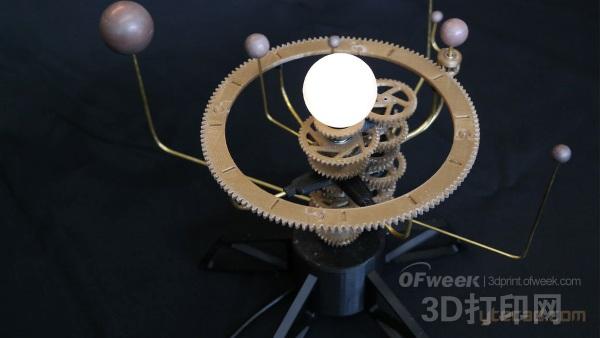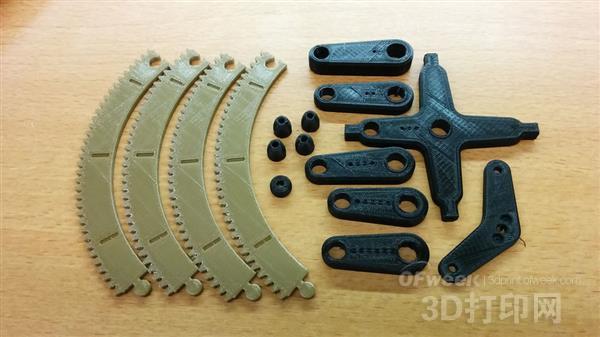A few days ago, on the DIY hot station Instructables, there was a very interesting DIY project tutorial, which can guide you to 3D print your own solar system model. Although we have seen this type of 3D printed solar system model before, the new release is different in that it is the first solar system mode that can be run automatically, and it uses the ordinary desktop FDM 3D printer . Can print it out.
However, since it is automatic, there is no need for electrical and electronic, so in addition to 3D printers and wires, you need to prepare other things, such as brass tubes, bearings, wires, small motors and several other electronic accessories. In addition, you should be mentally prepared. The tutorial claims that the project requires approximately 250 grams of wire and approximately 15 hours of 3D printing time.

It is understood that these 3D printed model files are designed with Solidworks software and can be downloaded for free. Developers recommend using PLA as a printing material (although some of these planets are printed with Bronzefill wire). Fortunately, these 3D printed files don't need support, which is good news for those who don't have the patience to clean up the model after 3D printing.
After downloading the file, I found that my Replicator Z18 3D printer can print all the necessary parts in 3D at a time (at least from Mercury to Saturn). Of course, a 3D printer like the Z18 may not be available to many people. It is estimated that an ordinary 3D printer can print all the parts two or three times.

You may be wondering why I stopped at Saturn. In fact, the remaining two planets are also compatible with the 3D printed solar system model (or may be called the solar system), but since Uranus and Neptune (Pluto has been kicked out of the 9 planets in 2006) too far from the sun, So if you put it in, you may need a bigger place, so if your requirements are not so high, you can temporarily omit it.

In addition, the project's tutorial also details the orbit of the planet. Obviously, this project is very challenging for beginners. When you have all the parts ready or 3D printed, it takes a lot of time to assemble them. In addition, you also need to have some welding skills and electrical and electronic knowledge, fortunately, the designer provided us with a very detailed tutorial and a lot of video or image help.
The cores of manual coffee grinders are generally metal and ceramic.
The stainless steel grinding core is easy to generate heat during grinding, and it is easy to volatilize the aroma of coffee beans in advance. Ceramics are fragile, but ceramics hardly generate heat. Metal cores have a longer life than ceramics.
Coffee Grinder,Coffee Bean Grinder,Manual Coffee Grinder,Stainless Steel Coffee Grinder
Jiangmen Chang Kun Industrial Co., Ltd. , https://www.changkun-houseware.com